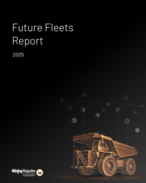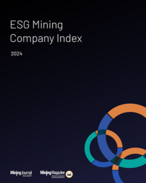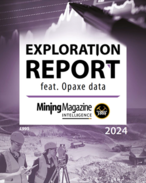This article is 18 years old. Images might not display.
The project involved investigating integrated P-wave/PS-wave seismic imaging to better characterise the subsurface prior to underground mine planning and development to improve productivity and safety.
Synthetic and real 2D multi-component seismic datasets were used to help understand how P and PS seismic waves respond differently to different rock types and structure/fracturing, and how to interpret observations of these different behaviours in real data to reveal lithological detail of the subsurface.
The different modes of propagation of P and S waves mean they travel at different speeds through the earth, and respond differently to various geological situations.
“For example, P waves are influenced by pore space and/or fluid and gas saturation, and S waves will only travel in solid materials. This difference in behaviour makes integrated use of P- and S-wave information potentially valuable for helping better understand lateral variations in the subsurface lithology,” Velseis research and development geophysicist Dr Natasha Hendrick said.
While Velseis has been experimenting with converted-wave seismic technology for the past five years in Australian longwall mines for enhanced structural imaging, it was a natural progression for the company to see if the combined use of the imaging would result in better lithological characterisation. Much of the work was based on the successes achieved in the petroleum sector using converted-wave seismic technology.
“Our research concluded that absolute Vp/Vs values [a lithology indicator] are unlikely to be recovered in the coal environment. And due to the inherent resolution limits of seismic data, Vp/Vs analysis isn’t able to remotely acquire high-resolution geological detail in the immediate roof and floor of a target coal seam. However, we demonstrated that Vp/Vs analysis could successfully identify broad zones of relative lithological variation,” Hendrick said.
“The project recommends that Velseis work with minesite staff to assess the usefulness of the information we can extract. While detailed roof/floor information may not be able to be extracted, there is potential for mapping large sandstone channels that affect underground mining operations in parts of the Bowen Basin.”
Velseis has recommended additional field trials to help generalise conclusions about the relevance and resolution of information that can be extracted via Vp/Vs analysis.
This research has also introduced an alternative method for detecting zones of anomalous fracturing that have the potential to be zones of weakness. “Such information will also contribute to a better understanding of floor and roof strength prior to mining,” she said.
“With regards to the shear-wave splitting analysis trials to detect zones of fracturing – the initial experiments suggest that the S waves do give an accurate indication of dominant local stress fields and may locate zones of anomalous fracturing. The project recommends investigating more complex methods for extracting relevant information from the PS seismic data to help improve the robustness of the geological detail we can extract.”
The main benefits to come out of this project for coal operations is extracting details of rock type (eg sandstone verses shale) in the geological intervals above and below target coal seams to help mine engineers plan around variations in roof and floor strength.
Velseis is already conducting commercial 2D multi-component seismic surveys that use technology developed by the company to acquire, process and interpret PS seismic data. The commercial work is largely focused on structural interpretation.
“However, as our research teaches us more about how we can take advantage of the multi-component seismic data, we will apply the technology to client projects. Validation of project results as mining is started in survey areas will also help progress the development of our integrated P/PS interpretation,” Hendrick said.























